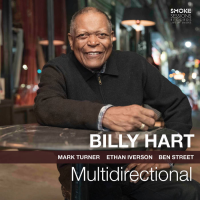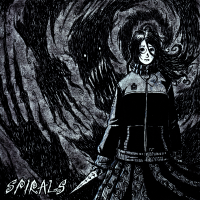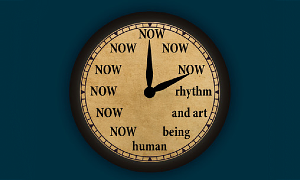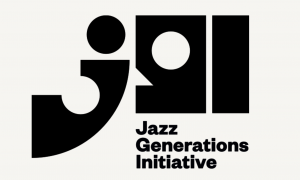By Joe Samuel
Chords and the way they fit together have provided some of the greatest challenges to our musical understanding and teaching. It is never long before we become bogged down in Roman numerals, or circles of fifths with numerous arrows. Even the simple chord progressions of the blues can quickly become confusing with inversions, substitutions and turnarounds, so that the amateur musician is left bewildered.
SeeChord is trying to change all that. Using simple visual patterns to represent the harmony of a piece, the user can quickly identify certain important features of a piece of music that stand out as being conventional, or that break the “rules" of harmony.
To start with, the root notes of the chords are laid out on the y-axis of a graph. The chords are arranged in fifths which musically speaking is very important. Bars, measures, beats or time is laid out on the x-axis, so an empty SeeChord chart (in the key of C) looks like this:
Let's take a simple chord progression such as C-F-G-C or I-IV-V-I. When written down as text, we cannot gain much insight into how the chords are related. However, on a SeeChord chart and due to the chords being arranged in fifths, the chords that are closest together visually along the y-axis, are also most closely related musically. So the progression C-F-G-C looks like this:
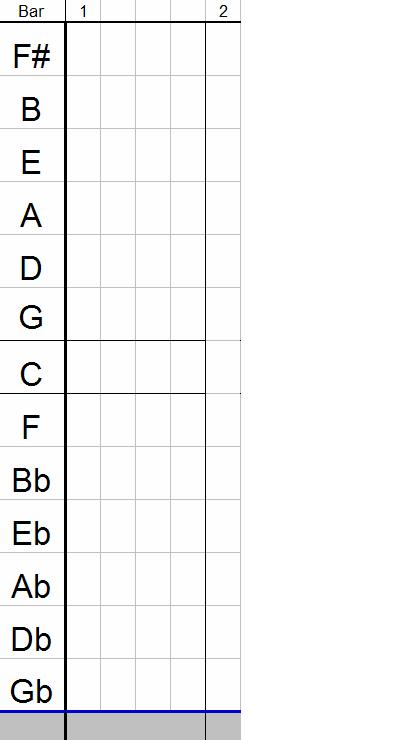
The symbols have been joined up with simple lines to provide a little more visual clarity. It takes just a small step to extend this to a 12-bar blues progression:

Now we can start to see some patterns in how the chords are changing over time. Notice how the tonic of C is repeated at the beginning, middle and end of the progression.
Now comes the real advantage of SeeChord. We can compare the above chart of a simple 12 bar blues, to a more complex version of the 12-bar blues, where some of the chords have been changed or “substituted." Here is an example:

Some new symbols have appeared here, namely:
We can see from this second chart how the basic movement has remained the same, moving down to F and then through G and back towards C. However, this variation contains some interesting features that could easily remain hidden. Let us have a look at the chords as they appear as text:
C6-F7-C6-gm7-C7-F7-F7-C7-C7-dm7-G7-C7-A7-D7-G7.
It is already confusing to extract meaningful information out of this text without serious concentration and understanding. From the SeeChord chart however, we can instantly see features such as the F and G in the first four bars, the use of dm7 as an approach to G in bars 9 and 10, and the “turnaround" in the last two bars-a way of coming back to C while keeping the harmonic momentum going, rather than just staying on C.
We can also see a very important pattern emerging, which is the falling fifth. Much of music depends on the ability to fall through one or more fifth. For example, C-A-D-G-C as we see in the last bars of the blues variation.
This falling through fifths can be used to change key, to establish the original key, or to provide variation to a chord progression.
Here is an example from a jazz standard known as “Rhythm Changes" based on the harmony of “I got Rhythm"

In this chart, the chromatic shifts have their suggested “tritone" counterparts in grey. The complex harmonic movement reveals its true nature as it descends slowly back towards the tonic. This is a fascinating insight into how a complex chord progression is really structured, and also which chords could be substituted easily when playing.
For a final example, let's look at a notoriously complex chord progression, that of John Coltraine's “Giant Steps":

Here we can actually see how the complex harmony is split into 3 different tonal centres of Eb, B and G, and how the harmony falls in fifths towards these keys. The arrows on the connectors are to show where the “perfect cadences" are, which are particularly strong pairs of chords. To see an animated extract of this piece below.
There are many other revelations to be revealed by SeeChord, which can manage any level of harmonic complexity and shed light on music which has remained largely inaccessible for this kind of analysis until now. SeeChord.co.uk is where it is all happening, there you will find topics ranging from song-writing, modulation, cadences and even some secrets of The Beatles! You can send us your music to be analysed or just leave us some feedback. We are always up for a new challenge.
Chords and the way they fit together have provided some of the greatest challenges to our musical understanding and teaching. It is never long before we become bogged down in Roman numerals, or circles of fifths with numerous arrows. Even the simple chord progressions of the blues can quickly become confusing with inversions, substitutions and turnarounds, so that the amateur musician is left bewildered.
SeeChord is trying to change all that. Using simple visual patterns to represent the harmony of a piece, the user can quickly identify certain important features of a piece of music that stand out as being conventional, or that break the “rules" of harmony.
To start with, the root notes of the chords are laid out on the y-axis of a graph. The chords are arranged in fifths which musically speaking is very important. Bars, measures, beats or time is laid out on the x-axis, so an empty SeeChord chart (in the key of C) looks like this:
Let's take a simple chord progression such as C-F-G-C or I-IV-V-I. When written down as text, we cannot gain much insight into how the chords are related. However, on a SeeChord chart and due to the chords being arranged in fifths, the chords that are closest together visually along the y-axis, are also most closely related musically. So the progression C-F-G-C looks like this:

The symbols have been joined up with simple lines to provide a little more visual clarity. It takes just a small step to extend this to a 12-bar blues progression:

Now we can start to see some patterns in how the chords are changing over time. Notice how the tonic of C is repeated at the beginning, middle and end of the progression.
Now comes the real advantage of SeeChord. We can compare the above chart of a simple 12 bar blues, to a more complex version of the 12-bar blues, where some of the chords have been changed or “substituted." Here is an example:

Some new symbols have appeared here, namely:
We can see from this second chart how the basic movement has remained the same, moving down to F and then through G and back towards C. However, this variation contains some interesting features that could easily remain hidden. Let us have a look at the chords as they appear as text:
C6-F7-C6-gm7-C7-F7-F7-C7-C7-dm7-G7-C7-A7-D7-G7.
It is already confusing to extract meaningful information out of this text without serious concentration and understanding. From the SeeChord chart however, we can instantly see features such as the F and G in the first four bars, the use of dm7 as an approach to G in bars 9 and 10, and the “turnaround" in the last two bars-a way of coming back to C while keeping the harmonic momentum going, rather than just staying on C.
We can also see a very important pattern emerging, which is the falling fifth. Much of music depends on the ability to fall through one or more fifth. For example, C-A-D-G-C as we see in the last bars of the blues variation.
This falling through fifths can be used to change key, to establish the original key, or to provide variation to a chord progression.
Here is an example from a jazz standard known as “Rhythm Changes" based on the harmony of “I got Rhythm"

In this chart, the chromatic shifts have their suggested “tritone" counterparts in grey. The complex harmonic movement reveals its true nature as it descends slowly back towards the tonic. This is a fascinating insight into how a complex chord progression is really structured, and also which chords could be substituted easily when playing.
For a final example, let's look at a notoriously complex chord progression, that of John Coltraine's “Giant Steps":

Here we can actually see how the complex harmony is split into 3 different tonal centres of Eb, B and G, and how the harmony falls in fifths towards these keys. The arrows on the connectors are to show where the “perfect cadences" are, which are particularly strong pairs of chords. To see an animated extract of this piece below.
There are many other revelations to be revealed by SeeChord, which can manage any level of harmonic complexity and shed light on music which has remained largely inaccessible for this kind of analysis until now. SeeChord.co.uk is where it is all happening, there you will find topics ranging from song-writing, modulation, cadences and even some secrets of The Beatles! You can send us your music to be analysed or just leave us some feedback. We are always up for a new challenge.



